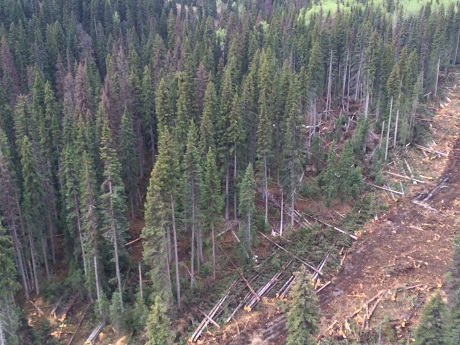Forest Health
For more than a decade, the mountain pine beetle has had significant impacts on forests in British Columbia and Alberta. It has largely run its course although we expect it will continue in northeast BC and Alberta for the next two to four years.
In most of our BC operations, we are winding down our large-scale mountain pine beetle salvage program that has been active for well over a decade now. As a result, most of our north-central BC operations virtually exhausted all of the dead pine timber stands that are suitable for lumber production. We are now shifting our harvest operations from a dead pine timber salvage program into a more traditional one of long-term sustainable harvesting, which includes prompt actions to combat forest health factors caused by insects, fire, wind and disease.
The trend of warmer temperatures and concomitant drought have subjected forests to additional stresses and are allowing certain forest pests to thrive. This has resulted in a large-scale outbreak of spruce beetle in northern BC. Significant efforts are underway to combat the spruce beetle outbreak in discrete areas of the Prince George and Mackenzie timber supply areas. We are collaborating with BC Ministry of Forests, Lands and Natural Resource Operations, forest industry partners and other affected parties including First Nations, to develop strategies and tactics to control the spread of this historically important pest and to begin salvaging the dead and dying spruce. We have sufficient capacity to deal with the current magnitude of the outbreak in our operating areas, and are looking to assist others who lack capacity to control and manage this outbreak in their operating areas.
We are responding to the spruce beetle infestation through the use of a highly effective trap tree method. Large-diameter spruce trees are felled in shaded areas to mimic natural windthrow. When spruce beetles emerge from attacked trees in spring and summer, they are attracted to these trap trees to lay eggs. The trap trees are then removed and milled prior to the emergence of the beetles in the following year. Since eggs are laid under the bark, they are destroyed at the debarking stage of the milling process.

Trap trees are set to attract spruce beetles.
In Alberta, our new forest management plan for FMA 9900037 included a suite of strategies to mitigate the potential mid-term loss of timber supply resulting from the infestation and the related accelerated pine harvest.